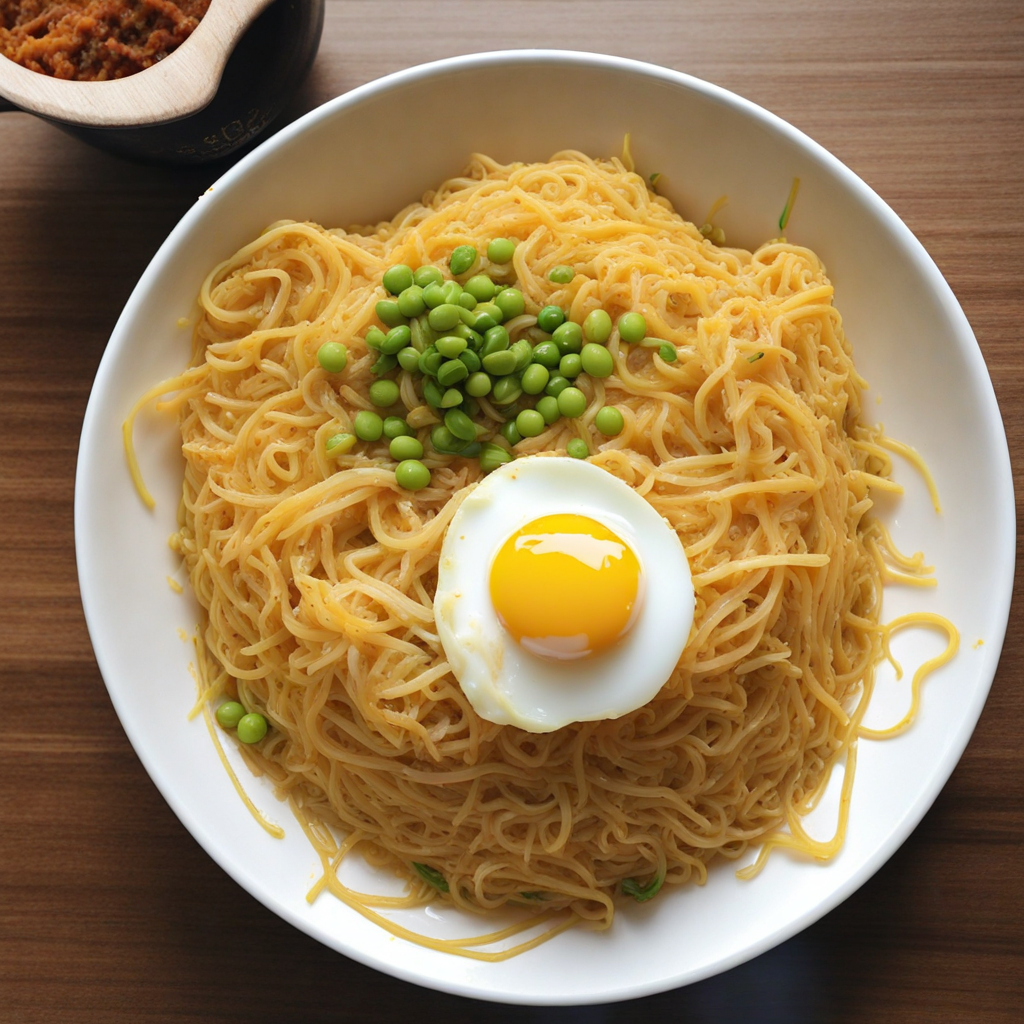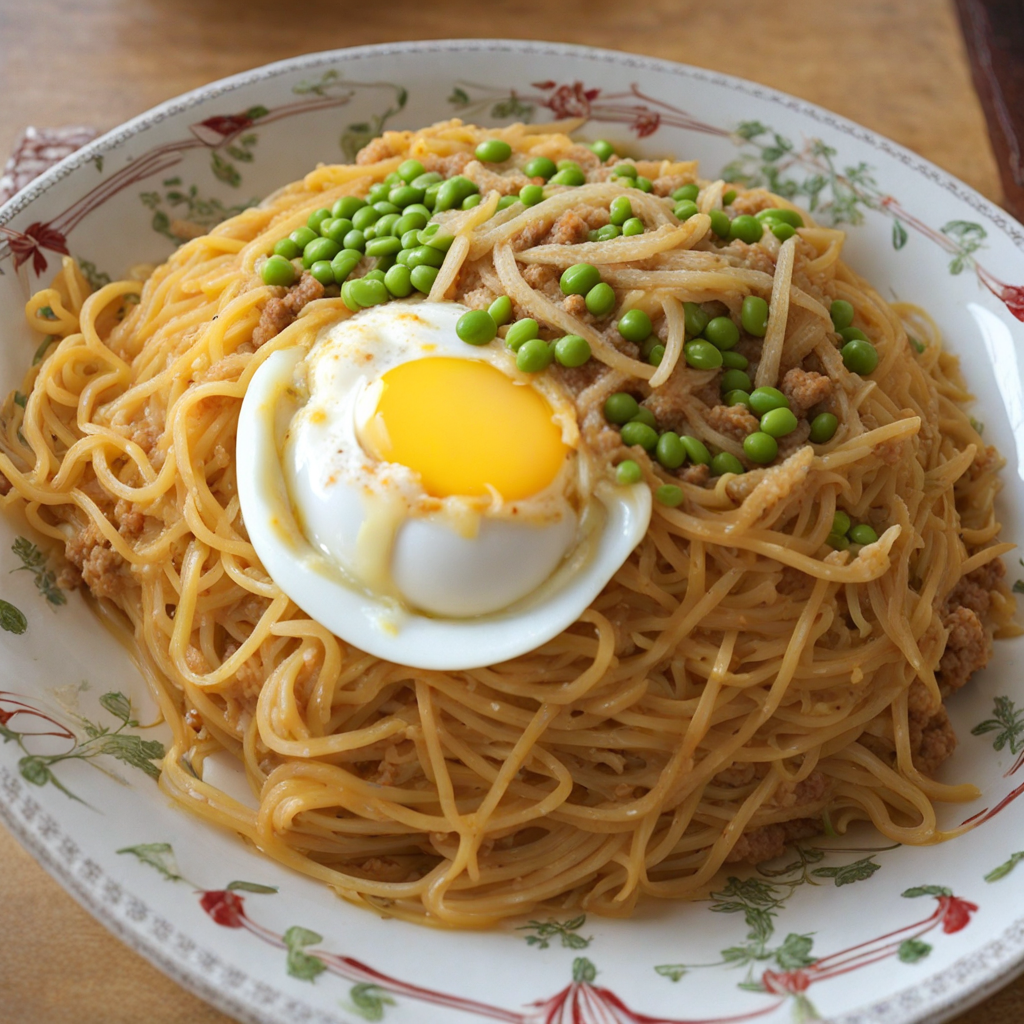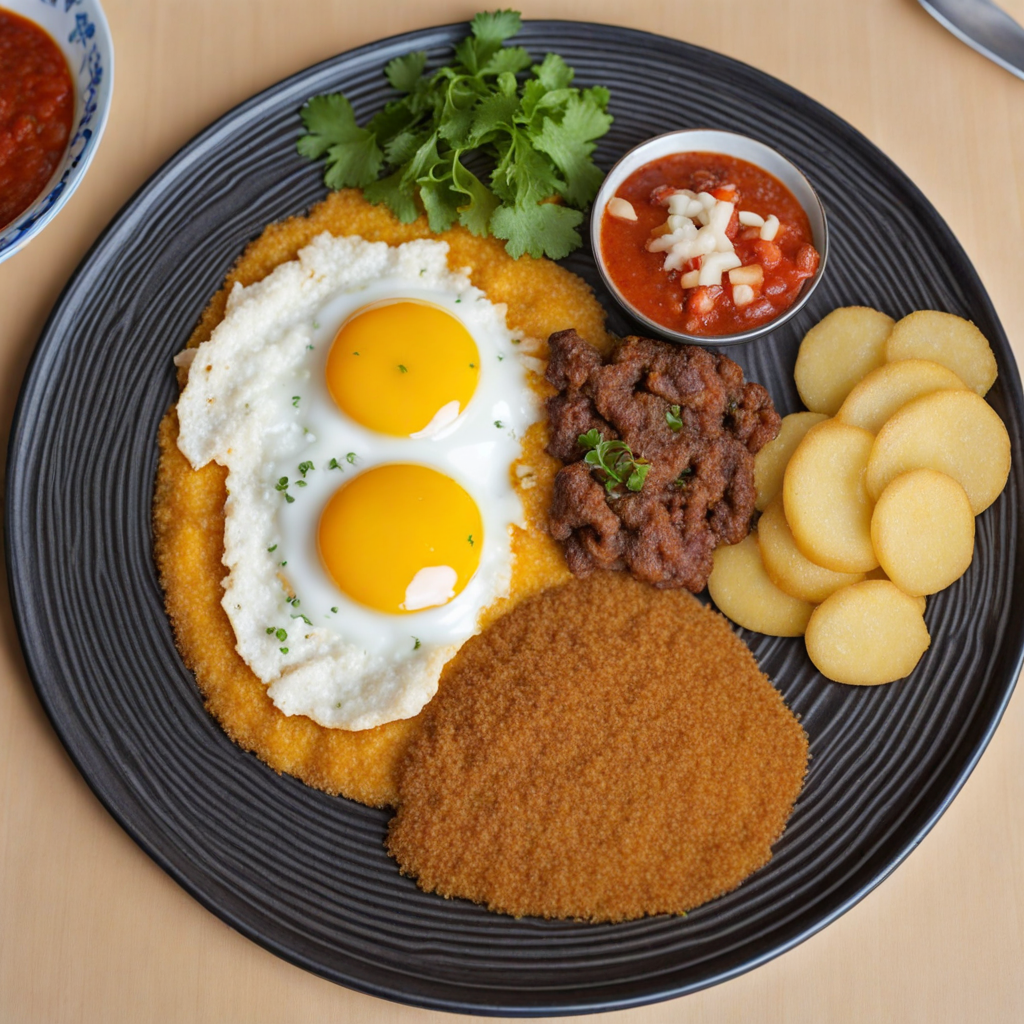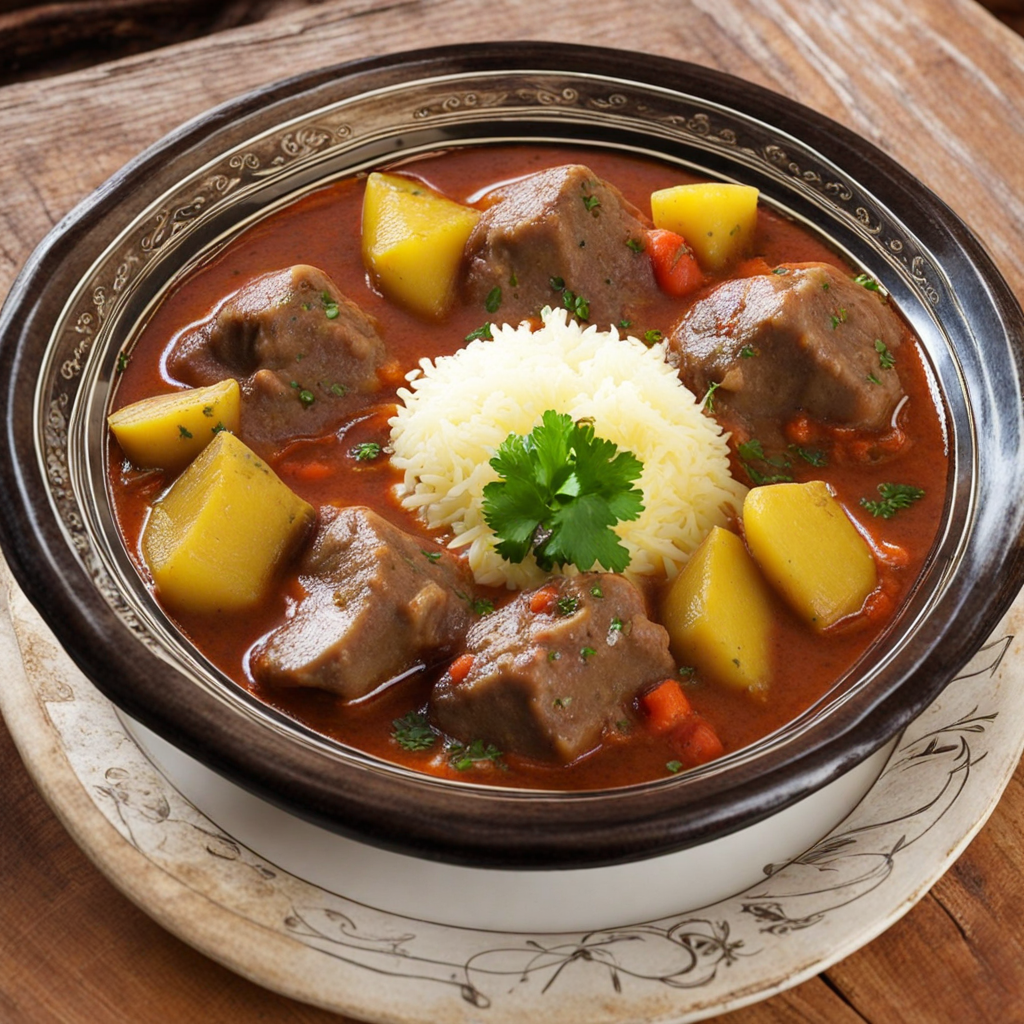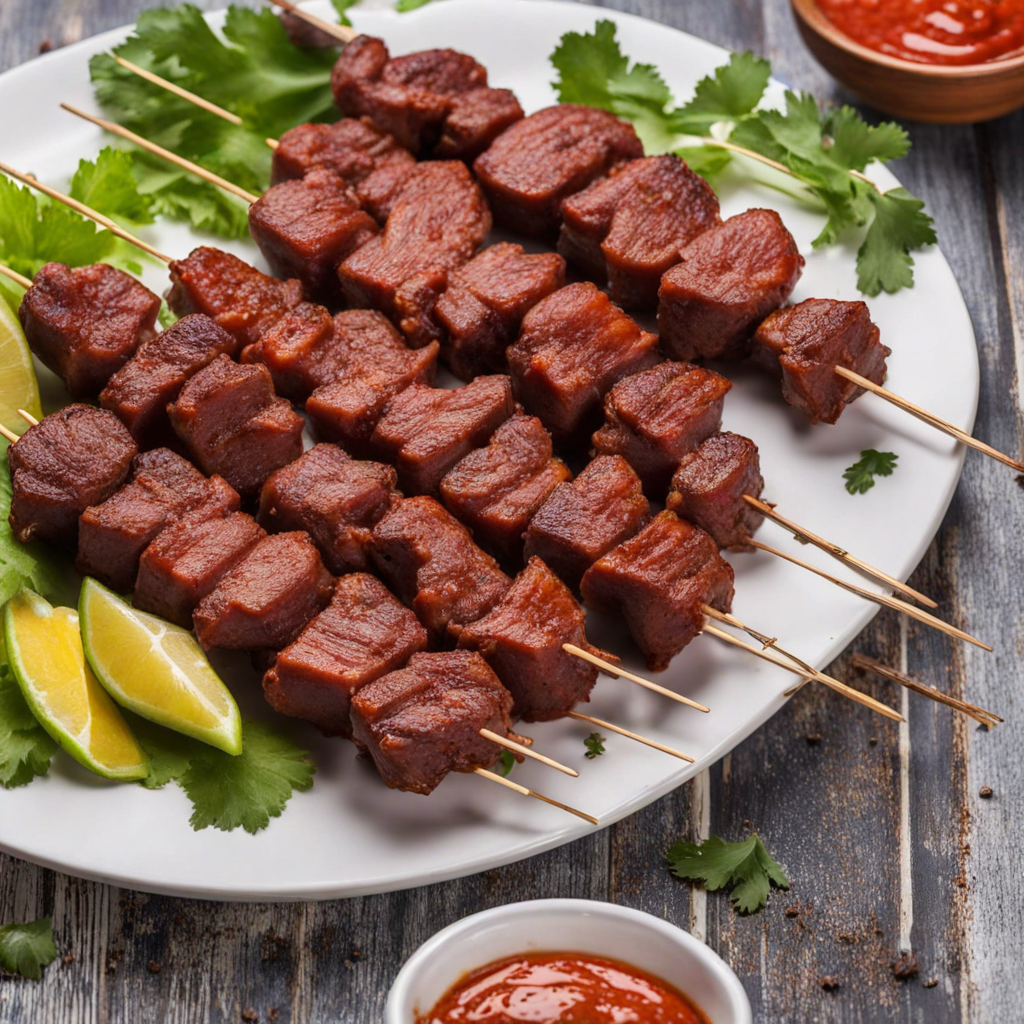Aji de Fideo
Aji de Fideo is a delightful Bolivian dish that showcases the rich culinary heritage of the country, combining the flavors of fresh ingredients with a unique blend of spices. At its core, Aji de Fideo features a base of fideos, which are thin noodles similar to vermicelli, cooked to perfection and coated in a vibrant and aromatic sauce made primarily from aji peppers. These peppers, known for their heat and distinctive flavor, give the dish its signature spiciness and bright color, making it a feast for both the eyes and the palate. The sauce for Aji de Fideo is often enriched with a medley of other ingredients, including garlic, onions, and tomatoes, creating a harmonious balance of flavors that complement the noodles. Some variations of the dish incorporate protein, such as chicken or beef, adding heartiness and depth to the meal. Served warm, Aji de Fideo can be garnished with fresh herbs like parsley or cilantro, which enhance its freshness and provide a pop of color, making it an inviting dish for any occasion. This dish is not only a staple in Bolivian households but also a symbol of the country's communal spirit, often enjoyed during family gatherings and celebrations. Aji de Fideo embodies the essence of Bolivian cuisine, where bold flavors meet comforting textures, inviting food lovers to explore a taste that is both exciting and deeply rooted in tradition. Whether you're a seasoned foodie or a curious newcomer, Aji de Fideo promises a delightful culinary experience that captures the heart of Bolivia's diverse food landscape.
How It Became This Dish
Aji de Fideo: A Culinary Journey Through Bolivia #### Origin and Historical Context Aji de Fideo is a beloved traditional dish from Bolivia, particularly associated with the regions of La Paz and Cochabamba. The roots of this dish can be traced back to the Spanish colonization in the 16th century, a period that greatly influenced Bolivian cuisine. The blending of indigenous ingredients and culinary techniques with those introduced by Spanish settlers gave rise to many traditional Bolivian dishes, and Aji de Fideo is a prime example of this fusion. The dish is primarily made with fideo, a type of thin noodle similar to vermicelli, and aji, which refers to hot peppers in Spanish. The aji used can vary, but it is often made with aji amarillo, a yellow chili pepper that is a staple in many South American cuisines. The use of aji symbolizes the indigenous agricultural practices that have been present in the Andes for centuries, as peppers were cultivated by pre-Columbian societies long before the arrival of the Spaniards. #### Cultural Significance Aji de Fideo is more than just a dish; it embodies the rich cultural tapestry of Bolivia. It is often served during family gatherings, celebrations, and religious festivals, serving as a reminder of the importance of community and shared heritage. In many Bolivian households, this dish is prepared for special occasions, such as birthdays, weddings, and even during the Feast of the Virgin of Socavón, a significant festival in La Paz. The preparation of Aji de Fideo is also steeped in tradition. Families often have their own unique recipes passed down through generations, each adding their personal touch. This familial approach to cooking highlights the role of food in building connections within families and preserving cultural heritage. The act of gathering around a pot of Aji de Fideo serves to strengthen bonds and foster narratives about one’s ancestors and their culinary practices. #### Ingredients and Preparation The core ingredients of Aji de Fideo include fideo noodles, aji peppers, chicken or beef, onions, garlic, and various spices. The dish is typically prepared by sautéing onions and garlic in oil, adding the chosen meat to brown it, and then incorporating the aji paste, which is made from blending the peppers with spices. The fideo noodles are then added along with broth, allowing them to absorb the flavors of the dish. Regional variations of Aji de Fideo exist, often incorporating local ingredients. For instance, in some areas, potatoes or corn might be added, showcasing the diversity of Bolivian agriculture. The versatility of this dish allows for adaptations that reflect the local environment and the available resources. #### Evolution Over Time Throughout the years, Aji de Fideo has evolved while maintaining its traditional roots. In the mid-20th century, as Bolivia underwent significant social and economic changes, so too did its food culture. Urbanization and migration led to the blending of rural and urban culinary practices, which impacted how traditional dishes were prepared and consumed. The globalization of food culture has also influenced Aji de Fideo. With the rise of fusion cuisine in the late 20th and early 21st centuries, chefs and home cooks alike began experimenting with Aji de Fideo, incorporating international flavors and techniques. For example, some modern interpretations might include the addition of cream or cheese, creating a richer texture and flavor profile that diverges from the traditional preparations. However, despite these adaptations, many Bolivians remain committed to preserving the authenticity of Aji de Fideo. Culinary festivals and competitions often celebrate traditional recipes, encouraging younger generations to learn and appreciate their culinary heritage. This has resulted in a renewed interest in traditional Bolivian dishes, with Aji de Fideo standing at the forefront of this culinary revival. #### Aji de Fideo in Contemporary Bolivia In contemporary Bolivia, Aji de Fideo continues to be a staple in both rural and urban areas. It is commonly found in restaurants, street food stalls, and homes across the country. The dish serves as a symbol of national pride, reflecting Bolivia's rich agricultural heritage and the resilience of its people. The growth of tourism has also brought Aji de Fideo into the spotlight, as culinary enthusiasts and travelers seek authentic Bolivian experiences. Cooking classes and food tours often highlight this dish, allowing visitors to engage with local cultures and learn about the significance of traditional foods. Moreover, the rise of social media has played a role in promoting Aji de Fideo. Food bloggers and influencers share their experiences with the dish, showcasing its vibrant colors and inviting textures. This online visibility has contributed to the resurgence of interest in Bolivian cuisine, encouraging both locals and foreigners to explore the depths of Bolivian food culture. #### Conclusion Aji de Fideo is more than just a delicious meal; it is a narrative of Bolivia's history, culture, and resilience. From its indigenous roots and Spanish influences to its place in contemporary society, this dish has adapted and evolved while remaining deeply connected to its origins. As Bolivia continues to navigate the complexities of modern life, Aji de Fideo stands as a testament to the enduring power of food to unite people, preserve traditions, and celebrate cultural identity. In every bowl of Aji de Fideo, one can taste the stories of generations, the richness of the land, and the spirit of a nation that honors its culinary heritage while embracing the future. Whether enjoyed at a family gathering or a bustling restaurant, Aji de Fideo remains a cherished dish that encapsulates the heart and soul of Bolivia.
You may like
Discover local flavors from Bolivia


